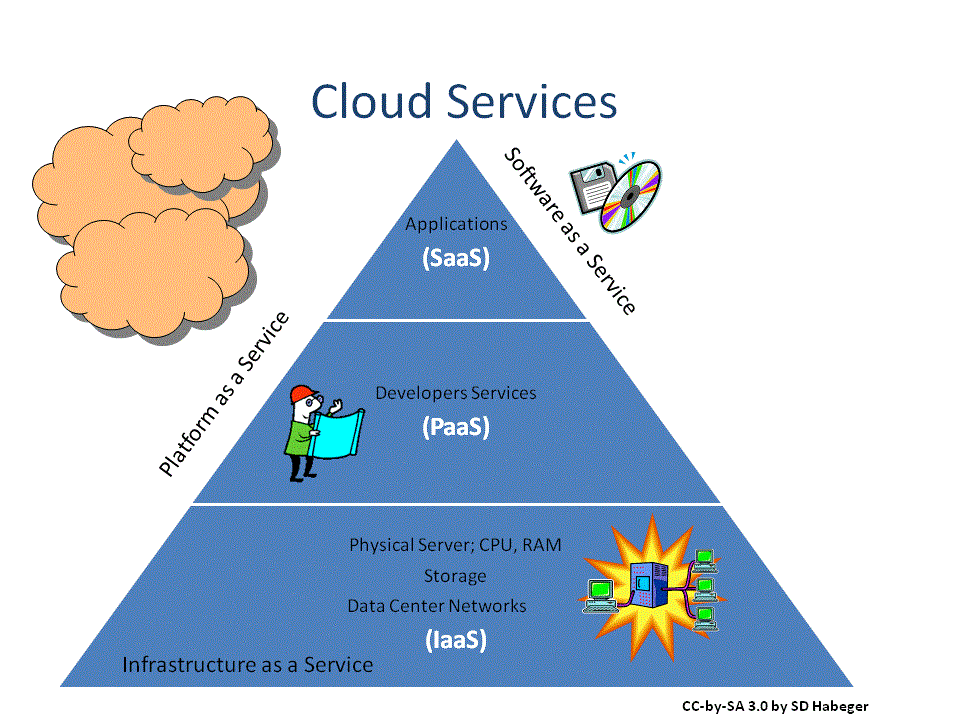In today’s digital age, where data and information are at the core of businesses and individuals alike, cloud computing has emerged as a revolutionary technology that is transforming the way we store, access, and process data. With its ability to provide on-demand computing resources, scalability, and cost-efficiency, cloud computing has become an integral part of our daily lives, powering everything from web applications and online services to artificial intelligence and big data analytics. In this article, we will explore the concept of cloud computing, its benefits, and its impact on various industries.
What is Cloud Computing?
Cloud computing can be defined as the delivery of computing services over the internet, allowing users to access and utilize computing resources on demand. These resources include servers, storage, databases, networking, software, and more, all of which are housed in data centers managed by cloud service providers. Instead of relying on local servers or personal devices, users can access these resources remotely via the internet.
Let’s also see the definition of cloud computing provided by the two prominent industry analysis firms-
- Per Gartner, “Cloud computing is a style of computing where massively scalable IT-related capabilities are provided ‘as a service across the internet to multiple external customers.”
- Per Forrester, “Cloud computing is a pool of abstracted, highly scalable, and managed infrastructure capable of hosting end-customer applications and billed by consumption.”
In business terms, we can say that Cloud computing is a smart, complex, powerful computing method to address scalability and availability concerns for large-scale applications.
Cloud computing offers several deployment models and service models:
Types of Cloud Deployment Models
Public Cloud
Resources are shared among multiple users and are hosted by third-party cloud service providers.
Private Cloud
Resources are dedicated to a single organization and can be hosted on-premises or by a third-party provider.
Hybrid Cloud
Combines both public and private cloud environments, allowing organizations to leverage the benefits of both.
Cloud Service Models

There are three models of cloud computing categorized as-
Infrastructure As a Service (IaaS)
Infrastructure as a Service (IaaS) offers computing power, storage, and networking infrastructure, including firewalls and load balancers as a service. IaaS services are provided through the public internet. Customer who owns the software requires hosting to deploy and run their software. IaaS vendors who manage the infrastructure use virtualization technologies to provide services.
Examples- Google Compute Engine, Amazon EC2, etc.
- Best Courses for Python Online in India 2022
- 6 Best online training and tutorial courses to learn Digital Marketing
- Best Courses for RPA
- 7 Best Agile Training & Certification Courses Online
- 7 Best Online Training and Certification Courses for Java
- Popular Programming Languages for Generate Jobs and Good Salary
- Best Online Courses to Become an Expert in SEO
Platform As a Service(PaaS)
Apart from the infrastructure services, PaaS also includes development tools, middleware, business intelligence (BI) services, database management systems, etc. It is designed to support the complete application development lifecycle.
Examples – AWS Elastic Beanstalk, Windows Azure, Heroku, Salesforce, etc.
Software As a Service (SaaS)
It is a distribution model that enables software applications to customers over the internet as a service. The best part of SaaS is that it does not require installing, maintaining, and running any software. The application is stored in the service provider server, and it can run directly from the web browser. In SaaS, data is entirely safe. Even if there are any faults in the system, the data remains protected.
Recommended for You: 6 Best online training and tutorial courses to Learn Digital Marketing
Examples – Google Apps, Microsoft Office 365, etc.
Pros and Cons of IaaS, PaaS and SaaS
| Cloud Model | Pros | Cons |
| IaaS (Ideal for IT administrator) | Security for public IaaSNetwork DependenceCost may be unpredictable customer needs to manage OS data, etc. The requirement for skilled resource | Security for public IaaSNetwork DependenceCost may be unpredictable customer needs to manage OS data, etc. The requirement of skilled resource |
| PaaS (Ideal for Software Developers) | Centralized Management and DataRapid development & testing platform Issues Managed by ProvidersSpeed, Flexibility, and AgilitySavings in Up-front CostsReduced amount of coding | High dependency on vendor’s speed, reliability, support, and data privacy |
| SaaS (Ideal for end-users) | Re-usable services hardware and initial set-up cost-efficient Use of Software LicensesCentralized Management and DataSavings in Up-front CostsEasily customizable | Data security and privacy lack of control vendor Lock-in |
Benefits of Cloud Computing
Cloud computing offers numerous benefits to businesses, individuals, and society as a whole. Some key advantages include:
1. Scalability:
Cloud computing enables organizations to scale their resources up or down based on demand. This flexibility allows businesses to handle sudden spikes in traffic or expand their operations without significant upfront investments.
2. Cost Efficiency:
Cloud computing eliminates the need for upfront infrastructure investments, as users only pay for the resources they consume. It reduces hardware and maintenance costs and provides predictable pricing models, making it more affordable for businesses of all sizes.
3. Accessibility and Collaboration:
With cloud computing, users can access their data and applications from anywhere with an internet connection. This accessibility promotes collaboration and allows for remote work, enabling teams to collaborate seamlessly regardless of their physical locations.
4. Data Security and Disaster Recovery:
Cloud service providers prioritize data security and invest heavily in advanced security measures. They employ encryption, access controls, and regular backups to protect data and ensure its availability even in the event of hardware failures or natural disasters.
5. Innovation and Agility:
Cloud computing allows businesses to rapidly innovate and experiment with new ideas. It provides easy access to cutting-edge technologies, such as artificial intelligence, machine learning, and big data analytics, empowering organizations to gain insights and make data-driven decisions.
The reason behind the increasing adoption of cloud solutions
The significant difference between on-premise and cloud is the place where its software and data reside. On-premise is the traditional method where the company manages all the data, environments, and infrastructure. No doubt, managing all these require a lot of capital, time, and resource. Cloud means that all the data are stored offsite, and the service provider is responsible for monitoring and maintaining it. However, both approaches have their advantages and disadvantages.
Here are the key reasons why businesses are opting to migrate on the cloud-
- With time cloud services have matured. Big players like IBM, and Amazon proving cloud services have given a lot of confidence and reliability to businesses to migrate to the cloud.
- Substantial monitory saving.
- Saving time and efforts
- Storage is less expensive.
- Scalability
- Saving on infrastructure
- Minimal downtime of applications
Impact on Industries:
Cloud computing has had a profound impact on various industries, revolutionizing the way they operate and deliver services:
1. Information Technology (IT):
Cloud computing has transformed the IT industry by enabling organizations to move away from traditional infrastructure management and focus more on innovation and delivering value-added services. It has also paved the way for the rise of cloud-native companies that provide cloud services, allowing businesses to leverage their expertise and infrastructure.
2. Healthcare:
Cloud computing has enhanced the healthcare industry by facilitating secure and efficient sharing of patient information among healthcare providers. It enables real-time collaboration, improves data accuracy, and streamlines processes, leading to better patient care and outcomes. Additionally, cloud-based telemedicine platforms have expanded access to healthcare services, especially in remote areas.
3. Education:
Cloud computing has revolutionized education by providing a platform for remote learning and collaboration. It offers educators and students access to educational resources, online courses, and collaborative tools, fostering a more dynamic and interactive learning environment. Cloud-based learning management systems have made it easier for institutions to manage and deliver educational content to a broader audience.
4. E-commerce:
Cloud computing has played a crucial role in the growth of the e-commerce industry. It provides businesses with the scalability and flexibility to handle high website traffic and manage large amounts of customer data. Cloud-based e-commerce platforms offer seamless online shopping experiences, secure payment processing, and personalized recommendations, enhancing customer satisfaction and driving sales.
5. Startups and Small Businesses:
Cloud computing has leveled the playing field for startups and small businesses, allowing them to access enterprise-grade technologies without the need for significant upfront investments. It provides cost-effective solutions for storage, computing power, and software applications, enabling startups to focus on their core competencies and compete with larger enterprises.
As more and more companies are switching from the on-premise server infrastructure to on-cloud solutions, there is a good demand for cloud professionals.
Leading Service Providers of Cloud Computing
Five leading service providers capture around 78% of the total cloud market. These players are-
- Amazon Web Service (AWS) – Captures approximately 33% of the market shares.
- Microsoft Azure – Captures around 16% of the market shares.
- Google Cloud Platform – Around 8% of the market shares
- IBM Cloud Services – Around 6% of the market shares.
- Adobe Creative Cloud – Around 5% of the market shares
Conclusion
Cloud computing has transformed the way we store, access, and process data, bringing numerous benefits to individuals, businesses, and industries. Its scalability, cost efficiency, accessibility, and security features make it an indispensable technology in today’s digital landscape. As cloud computing continues to evolve, we can expect even greater advancements and innovations that will further empower businesses and drive technological progress. Embracing cloud computing opens doors to endless possibilities, making it a cornerstone of the future of technology.
Online Courses on Cloud Computing for Beginners:
- Getting Started with Cloud Computing-Level-1
- Cloud Computing Concepts, Part 1 – Offered by The University of Illinois (Coursera)
